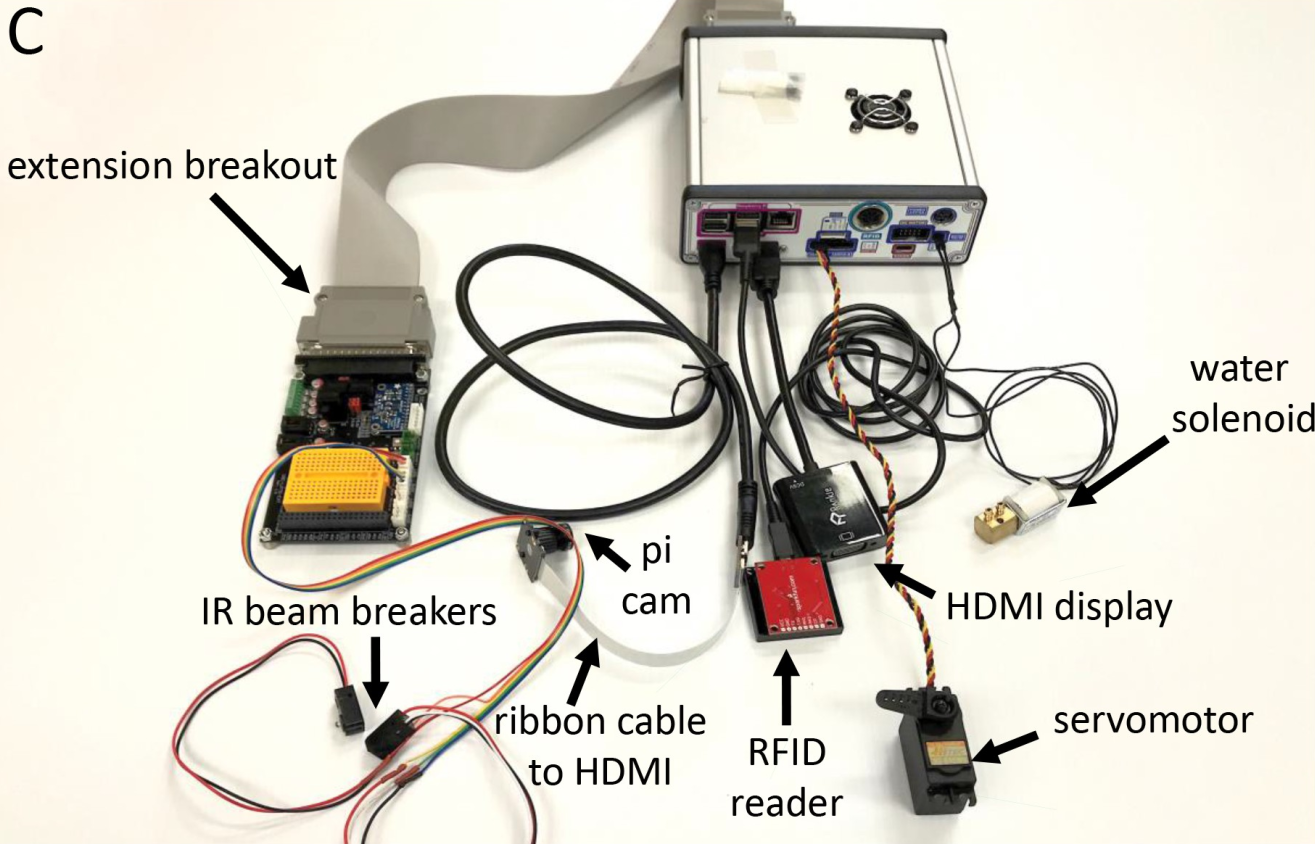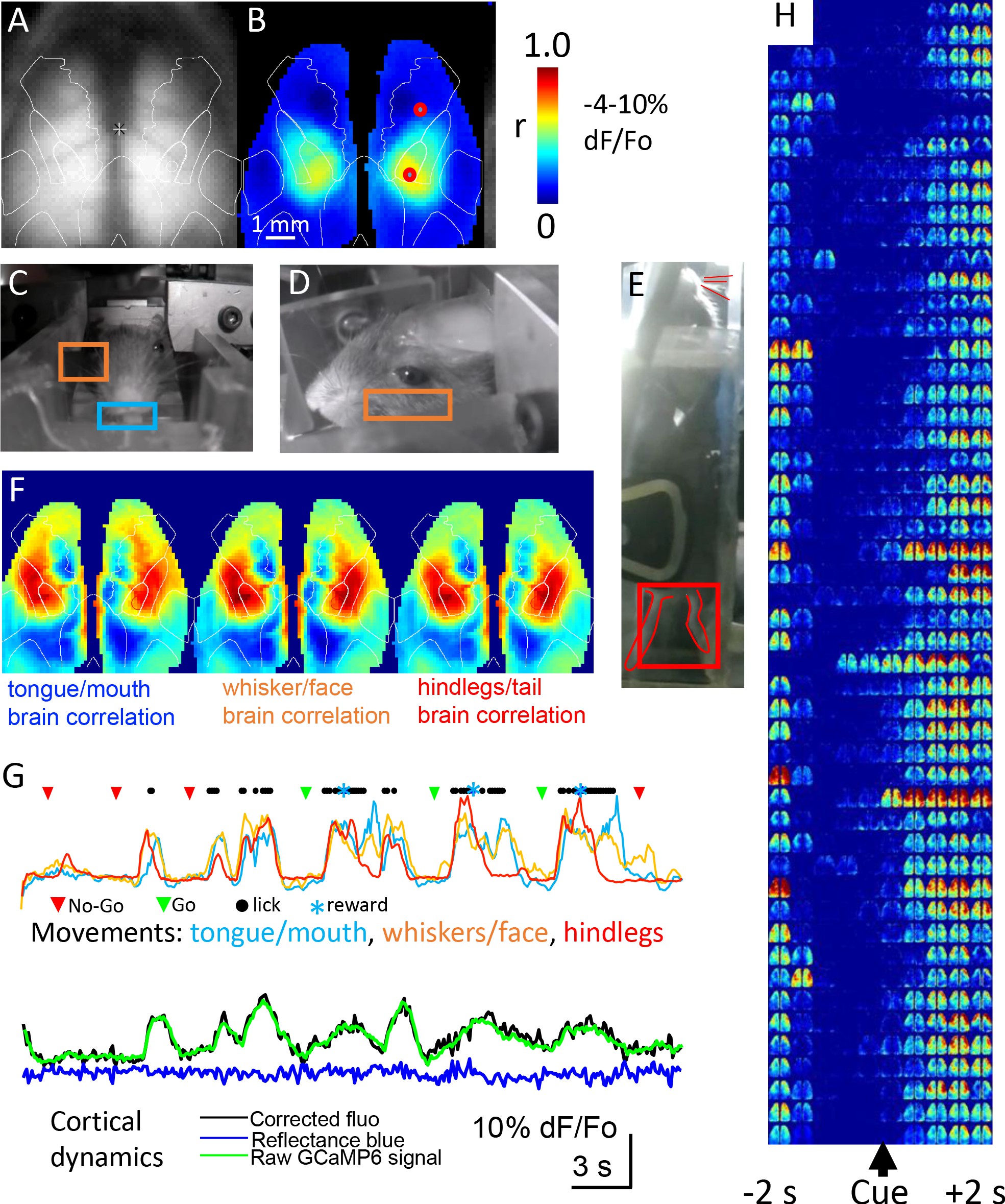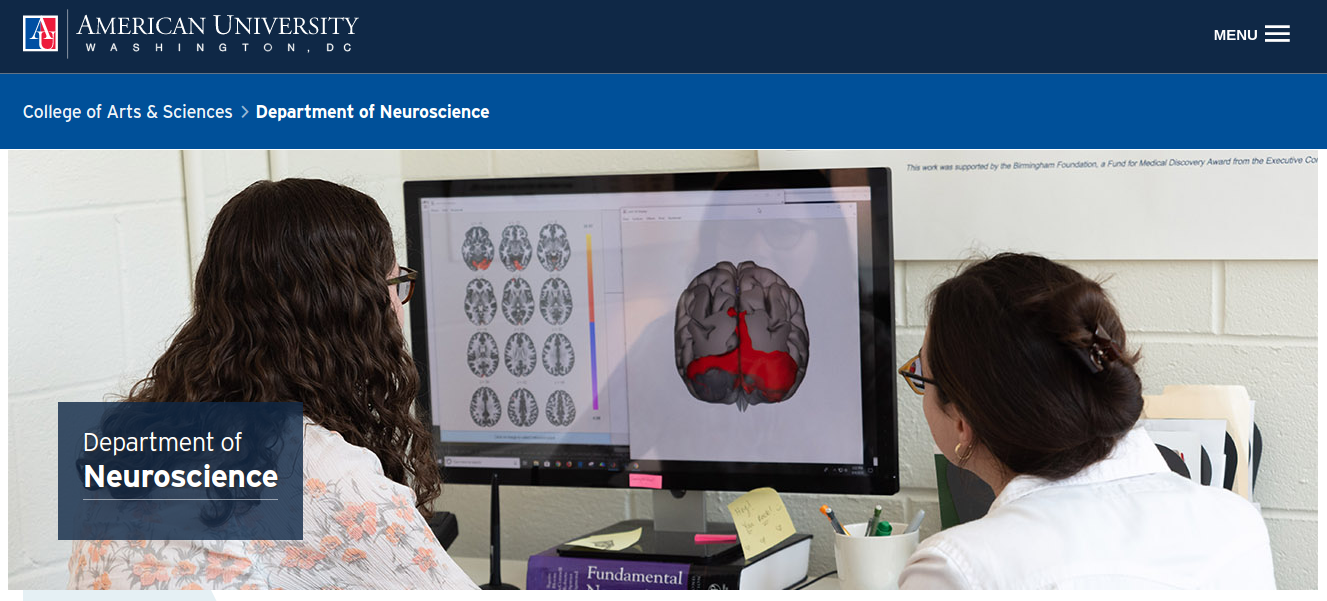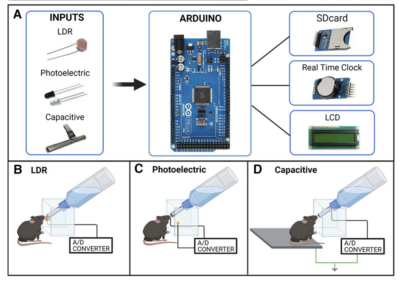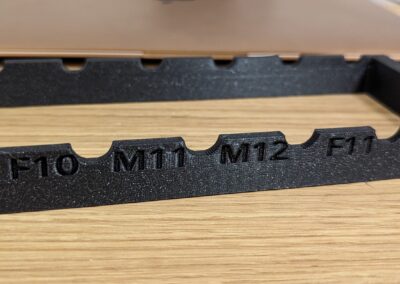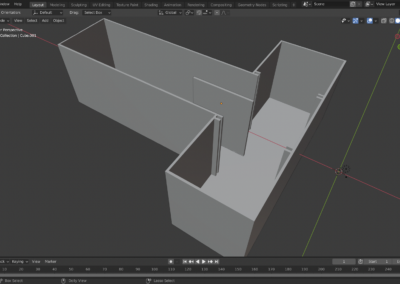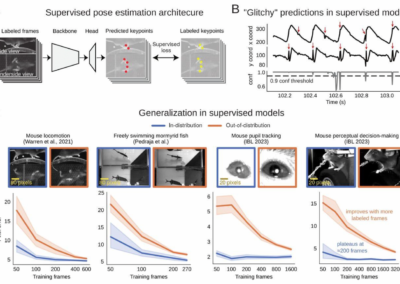Homecage Task Training and Mesoscale Imaging
; Timothy H Murphy and colleagues from the Kinsmen Laboratory of Neurological Research and University of British
Columbia, have developed, shared, and validated a homecage platform for automated task training and mesoscale brain imaging for mice.
________________________________________________________________
Training tasks and measuring neural activity in individual mice can be tedious and time consuming. The ability to automate this process improves the ability of researchers to collect high volumes of data to investigate brain and behavior. To address this, Murphy and colleagues developed a system built around RaspberryPi. Raspberry Pi is a small, inexpensive device with a wide range of flexibility. It can be used to automatically run operant tasks with rodents, due to its ability to incorporate HDMI video output during data collection. Furthermore, each Raspberry Pi can be given its own unique IP address to measure activity in each experiment, making it useful for tracking multiple homecages.
With this platform, the researchers were able to remotely observe and monitor each cage to see if animals had any difficulty during chronic imaging or rodents were not receiving an efficient amount of water as a reward for performing their task. Through the use of the Raspberry Pi technology, not only were the rodents observed while performing automated tasks, they were able to use mesoscale functional brain imaging to measure cortical activity as mice were performing the task. After the data is gathered via Raspberry Pi, a further step is taken by analyzing the data in individual parts using Python, which allows for detailed summaries regarding animal behavior including task
information and video files.
Recent work has offered substantial improvements over the initial designs. The incorporation of the RaspberryPi allowed for expansion of previous automated analysis of animal behaviors within home cages into more complex brain circuit level analysis. It could also lead to potential continuous monitoring within a larger sample size. This automated platform also has potential to reduce stress on animals and other forms of bias that can be introduced through experimenter handling and intervention.
This research tool was created by your colleagues. Please acknowledge the Principal Investigator, cite the article in which the tool was described, and include an RRID in the Materials and Methods of your future publications. Project portal RRID:SCR_021580; Software RRID:SCR_021617
Device Publication
Read more about this automated system from the recent eLife publication. The paper also includes a detailed build list and access to necessary code and build files.
Read the Documentation
Get access to the training protocol, files, build list, and other detailed information from the supplementary materials.
Thanks Kalliopi!
This project summary is a part of the collection from neuroscience undergraduate students in the Computational Methods course at American University.
Check out projects similar to this!

